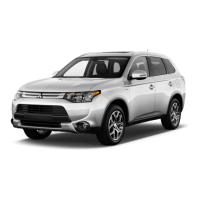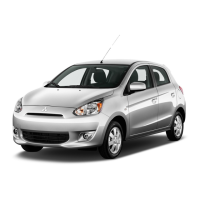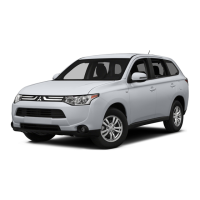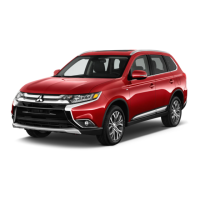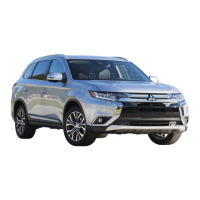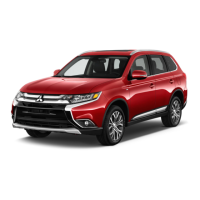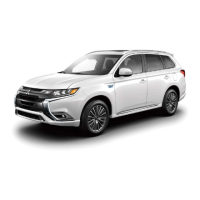Maintenance and inspection of seat belts
4-26 Seat and restraint systems
4
N00407000221
The seat belt webbing may be cleaned with
mild soap or detergent solution. Do not use an
organic solvent. Allow the belts to dry in the
shade. Do not allow them to retract until com-
pletely dry. Do not attempt to bleach or re-
dye the belts. The color may rub off and the
webbing strength may be affected.
Regularly check your seat belt buckles and
their release mechanisms for positive engage-
ment and release of the latch plate. Check the
retractors for automatic locking when in the
Automatic Locking Retractor function.
The entire seat belt assembly should be
replaced if the webbing shows any obvious
cuts, tears, increase in thickness in any sec-
tion of the webbing from broken fibers, or
severe fading from sunlight. All of these con-
ditions indicate a weakening of the belt,
which may adversely affect seat belt perfor-
mance in an accident.
N00407701762
This vehicle is equipped with a Supplemental
Restraint System (SRS), which includes air-
bags for the driver and passengers.
The SRS front airbags are designed to supple-
ment the primary protection of the driver and
front passenger seat belt systems by provid-
ing those occupants with protection against
head and chest injuries in certain moderate to
severe frontal collisions. The SRS front air-
bags, together with sensors at the front of the
vehicle and sensors attached to the front
seats, form an advanced airbag system.
The SRS driver’s knee airbag is designed to
supplement the primary protection of the
driver’s seat belt system. It can reduce the
forward movement of the driver’s lower legs
and provide increased overall body protection
in certain moderate to severe frontal colli-
sions.
The SRS side airbags and the curtain airbags
are also designed to supplement the seat belts.
The SRS side airbags provide the driver and
front passenger with protection against chest
injuries by deploying the bag on the side
impacted in moderate to severe side impact
collisions. The SRS curtain airbags provide
the driver and the passengers on the front seat
and the rear outboard seats with protection
against head injuries by deploying the curtain
airbag on the side impacted in moderate to
severe side impact collisions and by deploy-
ing both curtain airbags when a rollover is
detected. The curtain airbags are also
designed to help reduce the risk of complete
and partial ejection from the vehicle through
Any child who is too small to properly
wear a seat belt must be properly
restrained in an appropriate child
restraint system, to reduce their risk of
serious injury or death in an accident.
A child should never be left unattended in,
or unsupervised around, your vehicle.
When you leave the vehicle, always take
the child out as well.
Children can die from heat stroke if left or
trapped inside the vehicle, especially on
hot days.
Keep your vehicle locked when not in use.
Keep your vehicle keys away from chil-
dren.
Maintenance and inspection
of seat belts

